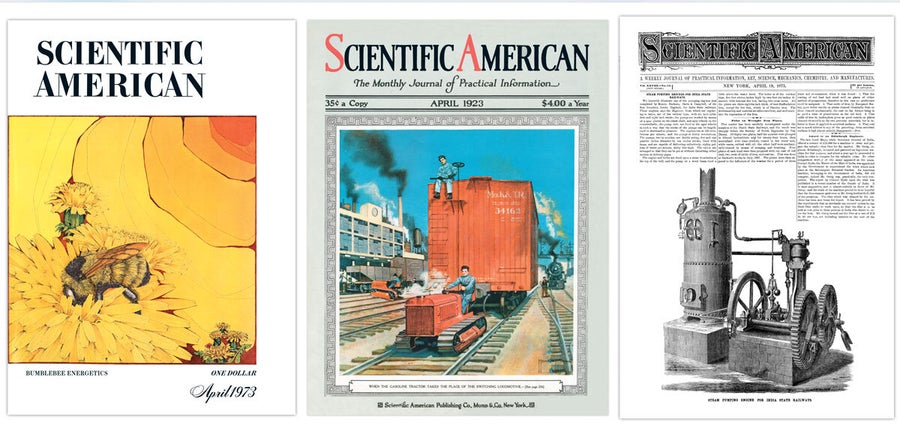1973
Catalytic Conversion
“Among the most troublesome air pollutants produced by automobiles are the chemically active nitrogen oxides. Workers at Bell Laboratories have found catalysts that react nitrogen oxides with a reducing gas (hydrogen or carbon monoxide), converting them to nitrogen and such harmless by-products as water and carbon dioxide. They can be coated on a ceramic support to make a filter-like device that could be installed in an automobile. So far such devices have been tested only in the laboratory; further tests are necessary to see if they will stand up under the severe conditions in an exhaust system of an automobile running for extended periods. The automobile industry faces increasingly strict Federal standards for reducing carbon monoxide, unburned hydrocarbons and oxides of nitrogen in exhaust emissions.”
On supporting science journalism
If you're enjoying this article, consider supporting our award-winning journalism by subscribing. By purchasing a subscription you are helping to ensure the future of impactful stories about the discoveries and ideas shaping our world today.
1923
Discovered: Nebraska Man
“At the recent meeting of the National Academy of Sciences, Dr. Henry Fairfield Osborn announced the discovery of a tooth giving evidence of a pre-historic and unknown species of anthropoid intermediate between the ape and the earliest man. This discovery was made by Harold J. Cook in the middle Pliocene formations of Nebraska. This tooth matches no known tooth of ape or man, modern or extinct. Dr. Osborn classifies it as a new species and genus and names it Hesperopithecus haroldcookii, which means ‘the anthropoid from the west discovered by Harold Cook.’ The fossil was found in the upper phase of the Snake River beds, associated with remains of the rhinoceros, camel, Asiatic antelope and an early form of the horse. Hitherto, no specimen of anthropoid primates had been discovered in America.”
Within a few years the novel classification was proved to be a mistake; it was retracted in 1927.
Artificial Rain
“There have been plenty of reported achievements in [artificial weather making] that, on investigation, turn out to be illusory. Now we are asked to believe that a method of dispelling clouds and fog, and incidentally of turning clouds into rain, cheap enough to be applied universally for the benefit of aviators and others, has been devised by investigators at work at McCook Field, near Dayton, Ohio, on behalf of the Army Air Service. The process consists of spraying the clouds from an airplane with electrically charged sand, clearing away the cloud and producing an incipient rainstorm. We are unable to see any reason why this process should extend very far. The grains of sand would quickly lose their electrical charge and behave the same as any other mineral dust found in the atmosphere.”
1873
Vesuvius House, Great Lava Views
“About two thirds of the way up the side of Vesuvius stands a small building, plainly visible. During cloudy and wet weather, it is shrouded in the dense veil of smoke which settles around the summit; and in times of eruption, the fiery streams seem to encompass it and flow far below its level. In this structure, thus dangerously located, Professor Palmieri, a well known Italian savant, has established an observatory and, with marvelous intrepidity, has remained at his post watching the convulsions of the volcano at times when his house stood between torrents of liquid fire, the heat from which cracked the windows and scorched the solid stone of the walls. The knowledge obtained at so great a risk has been recently given to the world in an ably written volume, which contains data of invaluable assistance in the future investigation of volcanic phenomena. Professor Palmieri considers that, to a certain extent, eruptions may be predicted. We suggest he supplement his efforts by turning from an intermittent to a constant volcano—from Vesuvius to Stromboli.”
Science Benefits Economy
“It is noticeable that scientific subjects have received more attention from the newspaper press of late. This is partly [because] it is becoming more generally known that discoveries that seemed at first to be without any application have contributed to the general good. Experiments in magnetism and electricity, which led to the invention of the electric telegraph, were made from curiosity only. None could have anticipated the use of spectrum analysis in the manufacture of steel. Other cases may be noted to illustrate the proposition that every addition that may be made to physical science is capable of an economic use.”

